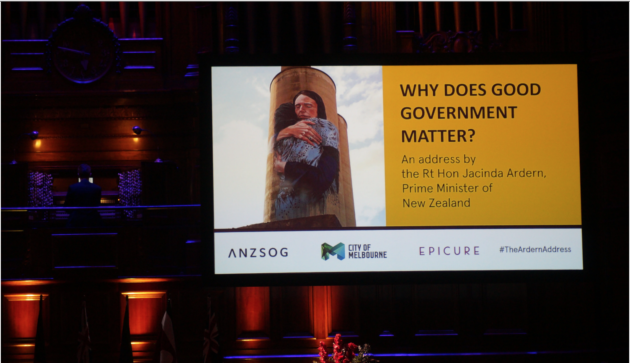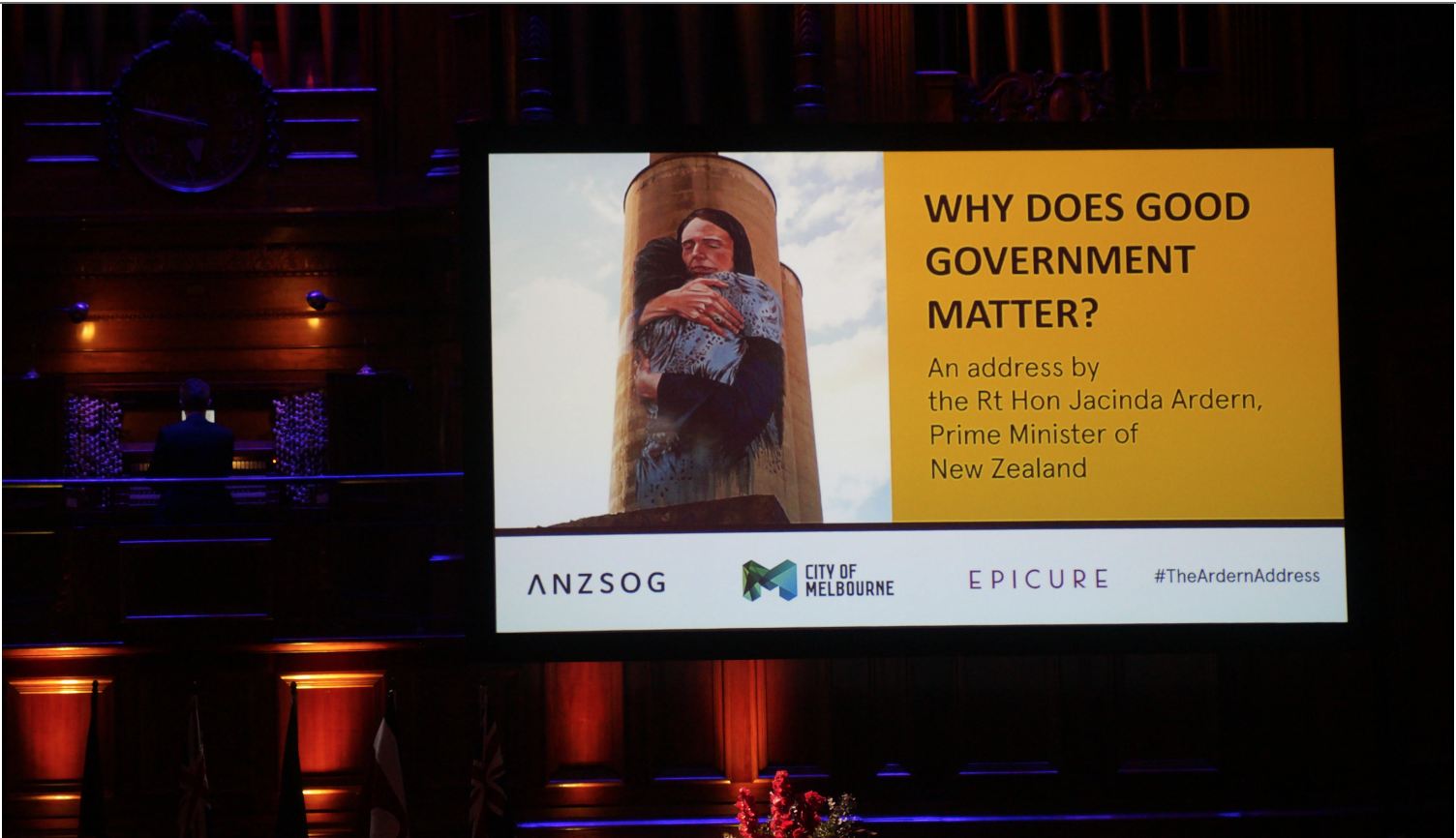Part three:
Why does good government matter?
The broader view: wellbeing economics
This year, in New Zealand, we introduced our first Wellbeing Budget.
We didn’t abandon the previous approach to public finance. We widened it. We said not only “What will be most conducive to economic growth?” but also, more fundamentally: “What will do the most to improve the lives of New Zealanders?”
‘What will help them to pursue lives of dignity and purpose?’
We embedded wellbeing at every stage of the creation of the Budget – from setting priorities to analysing proposals, to making the inevitable trade-offs that come with the privilege of being in government.
This is not a concept we came up with ourselves. For some time now, the OECD and the IMF have urged countries to look beyond economic indicators and the Government’s balance sheet to define success.
Our own Treasury has been preparing the ground for it, too, by developing a wide range of measures of living standards, taking into account social and environmental factors as well as traditional financial ones. After all, surely economic growth cannot or at least should not be a means to an end in itself, but rather the foundation for wider progress including greater equality?
At this point, everyone usually wants to know what a Wellbeing Budget actually means. All the talk about getting beyond GDP is well and good – but what does it change, in practice?
Let me give you the clearest example I can: child wellbeing.
New Zealand is a developed country where most people enjoy relatively high living standards, in global terms.
Yet it has been clear for decades that this cannot be said of a significant proportion of New Zealand children.
There are different measures, but to take one of them, which measures poverty after housing costs have been taken into account, about 250,000 New Zealand children lived in poverty in 2017/18.
Another measure, known as material deprivation, also paints a picture of poverty. Income measures tell us about families’ poverty in comparison with their peers, material deprivation tell us how many families lack the basics like having a couple of pairs of shoes for school or a warm heater in the family home.
Clearly, this is fundamental to a country’s wellbeing. Children who are quite literally the future of New Zealand, who have done nothing to choose their situation, are in unacceptable hardship.
And the effects are obvious – on our health system, where diseases that we should have abolished years ago are taking root again; on our education system, where a tail of under-achievement is plainly tied to legacies of social and economic inequality; on our justice system, where the worst-off kids are often the first to arrive as adults.
Now we can have both an economic argument and a moral one as to why this needs to be addressed – or we can simply say that either way it simply isn’t right. We talk about New Zealand being a great place to raise a family. /but instead, New Zealand should be the best place in the world to be a child – not a place where many grow up in conditions that we consider shameful.
So child wellbeing was one of five focus areas for our first Wellbeing Budget.
Before Budget Day arrived, we passed legislation to make sure that Governments now – and in the future – are held to account for decisions that have impacts on children living in poverty. The Child Poverty Reduction Act ensures transparent reporting on progress against published targets at the Government Budget each year.
For us, that has meant setting ambitious 10-year targets to halve child poverty and three-year targets to significantly reduce the rates. The Act itself doesn’t set out how Governments achieve their reduction goals. That bit is up to the politicians.
In our first year, we introduced a Families Package giving a significant income boost to more than 384,000 families in need. It includes a universal child payment in year one, a winter energy payment, and an extension to paid parental leave.
At this year’s Budget, we made a crucial change to our benefit system – indexing the main benefits to average wage increases, which will halt a drift between the two that has grown for decades. It is estimated that about 329,000 individuals and families will be better off as a result, including many of the children most in need in New Zealand.
Now indications are that, due to our policies, by 2020/21 we will reduce the number of children in poverty by between 50,000 and 74,000 children on the after-housing-cost measure.
Take another example: mental health.
New Zealand’s neglected mental health and addiction services are no surprise to anyone at home. They have been reported on for years. Our suicide rate is devastatingly high.
Last year, a wide-ranging Inquiry into Mental Health and Addiction revealed that we needed a whole new approach to mental health and addiction in New Zealand.
As it stands our mental health and addiction services are often orientated to those with the highest needs. People with emerging issues, or mild to moderate mental health or addiction needs, are largely our missing middle.
This comes at huge cost to individuals, families – and to the economy. It’s estimated that in 2014 the economic cost of serious mental illness alone was $12 billion, or five per cent of GDP.
That’s why we made mental heath a centre piece of our Wellbeing Budget, which included a more than $1 billion investment in New Zealanders’ mental health.
Our aim, in short, is to transform our approach so that within five years every New Zealander who needs it has access to a range of free services that support and maintain their mental wellbeing.
This new layer of services will put trained mental health workers in doctors’ clinics, Maori health providers and other health services so that when people reach out for help there is a trained mental health worker immediately available.
All of this responds to the idea that New Zealanders’ wellbeing must be the foundation of our public spending.
One more example, briefly: the aspirations of Maori are another priority in our wellbeing approach.
Here, once more, despite the Treaty of Waitangi partnership between Maori and Pakeha New Zealanders, despite several decades of settlements for land taken and promises betrayed, a legacy of inequality continues.
Our Wellbeing Budget prioritised new and empowering approaches through greater investment in the flagship Whanau Ora programme, which supports Maori to determine their own needs and desired wellbeing outcomes; through investments in our Maori health workforce; employment programmes and through targeted and culturally relevant support for prisoners, too many of whom are Maori.
At the same time, we have an aspiration that basic te reo Maori will be spoken by a million people in Aotearoa by 2040. So we have put substantial new resources into Te Taura Whiri, the Maori Language Commission, te reo teachers, and more funding for Maori broadcast media.
After all, if the country has a 2.6 per cent GDP growth rate, but its indigenous people aren’t thriving, are we truly in good health?


